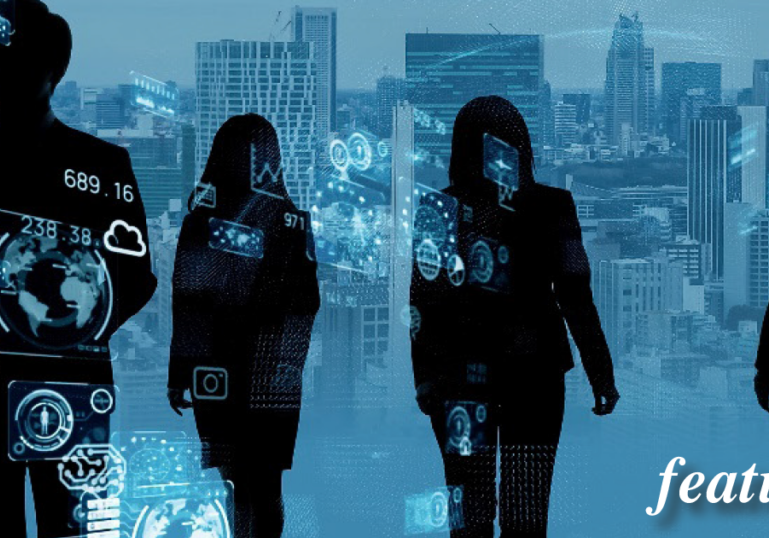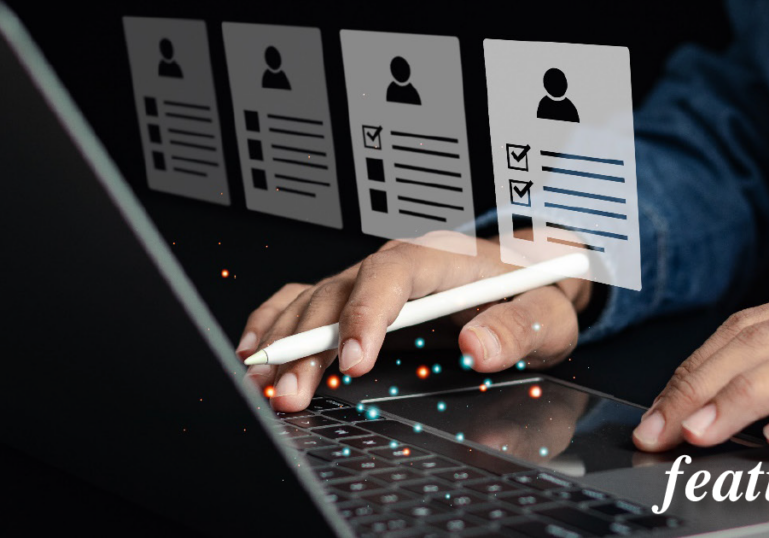The integration of AI into the workplace has accelerated over the past decade, transitioning from experimental projects to essential business operations. Historically, automation has always played a role in transforming industries, from the advent of the assembly line to the introduction of computers. However, the pace and scope of AI’s impact are unprecedented. Unlike previous technological advancements, AI’s capabilities in data analysis, natural language processing, and machine learning enable it to perform tasks that require a high degree of cognitive ability. Rapid AI technology growth has revolutionized the healthcare, finance, retail, and manufacturing industries, creating new opportunities and challenges.
As AI continues to evolve, it brings forth a new era where intelligent systems automate tasks and augment human capabilities. This shift necessitates reevaluating the workforce’s structure and the nature of work itself. Let’s delve deeper into the top three work trends in 2024 and explore how AI can serve as a positive force.
Trend #1: Increasing Financial Stress Among Employees
The financial well-being of employees has become a critical concern in the workplace. According to a 2023 study by Bank of America,1 only 42% of U.S. employees rate their financial health as good or excellent, a significant drop from previous years. This decline in economic health is alarming, as it directly impacts employees’ productivity and mental well-being. Financial stress can lead to increased absenteeism, lower engagement levels, and higher turnover rates as employees struggle to focus on their work due to monetary concerns. The cost of living, inflation, and economic uncertainties exacerbate these issues, making financial stress a prevalent challenge across various sectors.
How AI Can Help Financial Well-being (and Not Hurt)
Several companies have implemented AI-driven financial wellness programs to support their employees. For instance, PwC introduced an AI-powered platform 2 that offers personalized financial advice, helping employees manage debt, savings, and investments. The platform analyzes individual financial data and provides customized recommendations, allowing employees to make informed financial decisions. This initiative has improved employees’ financial literacy and boosted morale and productivity.
Moreover, AI can streamline the administrative aspects of financial management, such as payroll, taxes, and expense reimbursements. By automating these processes, AI reduces the likelihood of errors and ensures timely payments, alleviating some of the financial uncertainties employees may face. This AI impact improves employees’ financial literacy and security, enhancing their overall job satisfaction and engagement. Organizations can create a more financially secure and focused workforce by providing these supportive tools.
Trend #2: Job Displacement Due to Automation
The rise of AI and automation technologies has sparked significant concerns about job security. A 2023 report 3 from IBM found that 43% of CEOs have already reduced or redeployed their workforce due to AI-driven automation, with another 28% planning similar actions. This trend indicates a broader shift in the labor market, where traditional job roles are being redefined, and new skills are increasingly in demand. The fear of job displacement is a significant concern for employees, leading to anxiety and uncertainty about their future.
The impact of AI on job security varies significantly across different sectors. For example, manufacturing has extensively used AI-driven robotics and automation, reducing manual labor jobs. In contrast, sectors like healthcare and finance are witnessing the creation of new roles, such as AI specialists, data scientists, and AI ethicists. These new positions require a blend of technical expertise and ethical considerations, particularly in responsibly developing and implementing AI systems.
The ethical considerations surrounding AI and job displacement are multifaceted. Organizations must address concerns about equitable access to new job opportunities and the potential for AI to exacerbate existing inequalities. For example, there is a growing need to ensure that reskilling programs are accessible to all employees, regardless of their socio-economic background. Additionally, companies must consider the societal impact of AI deployment, such as the implications for local economies and the potential for increased unemployment rates in certain regions.
How AI Can Help Job Stability (and Not Hurt)
While AI’s ability to automate routine and repetitive tasks can lead to job displacement, it also creates new opportunities and necessitates the development of new skill sets. AI is not merely a tool for replacing human labor but can also be leveraged to augment human capabilities, enhancing the quality of work and opening new avenues for career growth. For example, in industries such as healthcare, AI can assist in diagnostics and patient care, allowing medical professionals to focus on more complex and nuanced aspects of their work.
Organizations can harness AI to develop comprehensive reskilling and upskilling programs, helping employees transition into new roles that are emerging due to technological advancements. AI-powered learning platforms can offer personalized training modules, adapting to the individual’s pace and learning style. These platforms can track progress, suggest areas for improvement, and provide certificates for completed courses, thus enhancing employees’ resumes. By fostering a continuous learning and adaptability culture, organizations can prepare their workforce for the evolving job landscape, ensuring that employees remain valuable assets even as technology advances.
Several companies have successfully navigated the transition to an AI-augmented workforce. For instance, Microsoft has implemented extensive reskilling programs to prepare its employees for AI and cloud computing roles. The company’s AI Business School 4 provides employees access to AI ethics, data science, and AI strategy courses, ensuring they are equipped with the necessary skills to thrive in a tech-driven environment.
Looking ahead, the future of work will likely see a continued blurring of boundaries between human and machine roles. As AI advances and becomes more sophisticated, it will take on more complex tasks, such as customer service, creative content generation, and strategic decision-making. However, this shift also allows employees to focus on tasks that require unique human skills, such as emotional intelligence, creativity, and ethical judgment. By embracing AI as a partner rather than a competitor, employees and leaders can find new ways to contribute and add value to their organizations.
Trend #3: Declining Trust in Organizational Leadership
In recent years, trust in organizational leadership has been on the decline. A recent study by Gallup 5 revealed that only 23% of U.S. employees firmly trust their leaders. This erosion of trust can be attributed to various factors, including a lack of transparency, perceived unfairness in decision-making, and concerns about data privacy. The increasing use of AI in decision-making processes can exacerbate these issues if not managed ethically and transparently. Employees may fear that AI is being used to monitor them excessively or make decisions that lack a human touch, leading to feelings of alienation and distrust.
One notable example is the controversy surrounding Amazon’s use of AI algorithms 6 for employee monitoring and performance assessment. Critics argue that such systems can lead to a lack of transparency and fairness, as employees may need to fully understand how their actions are evaluated or how decisions regarding promotions or terminations are made. This lack of clarity can erode trust in the organization, as employees may feel an impersonal system needs to be more fair to judge them.
How AI Can Help Build Trust (and Not Hurt)
To address these concerns, companies must prioritize ethical AI governance. This governance includes
- establishing clear policies on data usage,
- ensuring algorithmic transparency and
- maintaining accountability for AI-driven decisions.
For instance, Google has implemented an AI ethics board 7 to oversee the development and deployment of its AI technologies, ensuring that they align with the company’s ethical principles. Such initiatives can build trust by demonstrating a commitment to ethical standards and open communication.
Google’s AI ethics board is part of a broader governance structure that includes regular reviews and assessments of AI projects to ensure they align with ethical standards. Through stringent review, Google seeks to avoid applications that could cause harm, uphold privacy, and ensure that AI systems are accountable to humans. Google also collaborates with external experts to continually refine these practices and keep pace with evolving ethical challenges in AI.
Furthermore, implementing ethical AI governance is crucial to address concerns about privacy and fairness. Organizations should establish clear policies on collecting, using, and protecting data, ensuring that AI systems are designed and deployed with ethical considerations. Governance includes
- minimizing biases in AI algorithms,
- ensuring accountability for AI-driven decisions, and
- maintaining open lines of communication about how AI technologies are used within the company.
By prioritizing ethical standards and transparency, organizations can foster a culture of integrity and trust, making employees feel valued and respected.
Besides, AI-driven analytics can provide objective and transparent insights into company performance, helping employees understand how decisions are made and their role in the organization. Using this objective data for a clear and unbiased basis for promotions, raises, and other HR decisions can help demystify decision-making and build trust with their employees.
The Balance of AI and Human Connection
The future of AI in the workplace is not just about technological advancement but about creating a positive integration into the workplace. By focusing on how AI can help rather than hurt, companies can create a more inclusive, supportive, and dynamic work environment.
Here is an important reminder. In pursuing efficiency and innovation, organizations must maintain sight of the fundamental need for human connection in the workplace. While AI and technology can offer incredible benefits, they cannot replace the value of genuine human interactions and relationships. The human touch is crucial in addressing issues like financial stress, job security, and trust. Human connection fosters community and belonging, which is essential to employee well-being. For example, regular face-to-face meetings, team-building activities, and open communication channels help create a supportive work environment where employees feel valued and understood. Such practices are essential in reducing feelings of isolation and stress, especially in hybrid or remote work settings.
Beyond technological solutions, organizations should create a workplace culture emphasizing empathy, compassion, and respect. Cultural focus involves leaders being approachable and transparent and listening to employees’ concerns and aspirations. When leaders demonstrate genuine care and concern for their team’s well-being, trust and loyalty are foundational to a healthy workplace. Initiatives like mentorship programs, mental health support, and flexible work arrangements can significantly enhance employee satisfaction and retention. These strategies show that the company values its employees as workers and individuals with unique needs and challenges.
Moreover, fostering a sense of purpose and alignment with the organization’s values can inspire employees to engage more deeply with their work. This engagement goes beyond financial incentives or performance metrics. It’s about helping employees see the impact of their contributions and how they align with the company’s broader goals. Organizations can create a more cohesive and motivated workforce by emphasizing a shared vision and celebrating collective achievements. In essence, while technology and AI offer efficiency tools, the human-centric approach truly drives long-term success and fulfillment in the workplace. This balanced focus on technological and human elements is crucial for sustainable peak performance and overall organizational health.
ENDNOTES
1 Employee Financial Stress Peaks, https://bit.ly/46IomFt
2 PwC’s AI-Powered Financial Wellness Platform, https://bit.ly/46yScfC
3 GenAI Will Bring Unprecedented Workforce Disruption, https://bit.ly/4fA87OF
4 Reskilling and Upskilling Workforce for AI Disruption, https://bit.ly/4dAJG21
5 Gallup Workplace Report, https://bit.ly/3Wyy7l0
6 Amazon Surveillance and Labor Law, https://bit.ly/3ytjkQq
7 Google’s AI Ethics, https://bit.ly/3T1fxRJ
8 Sneha Mandala, https://bit.ly/3ygtrbu



